Duck Ragu (seriously, so good!)
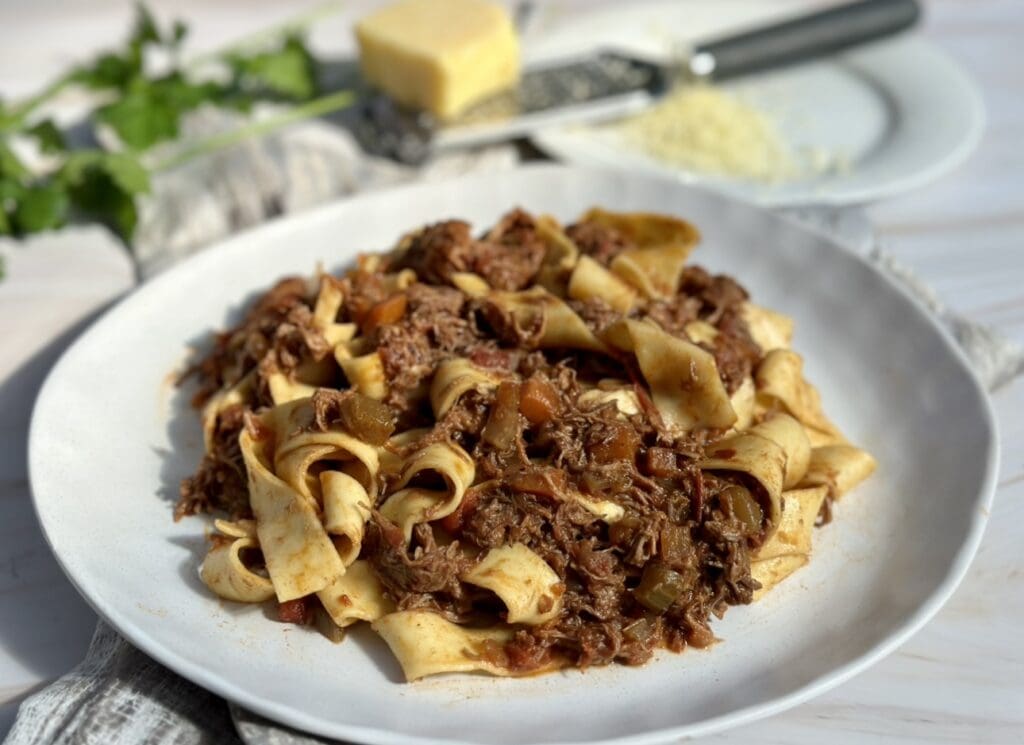
Silky smooth ribbons of pappardelle pasta in tasty, rich tomato & wine sauce. This slow-cooked Duck Ragu is both comforting and fancy!
Big chef kisses!
There’s just something magical about slow-cooked Duck Ragu! We simply throw everything into a pot and wait a few hours. When the time’s up, we’re greeted with the most beautiful sauce and tender duck. A comforting dish, but also very sophisticated at the same time.
If you have a lazy weekend with nothing much on, then this impressive ragu is for you. You and your family or friends will be blown away by how good this pasta dish is. They’re also going to think you’re an amazing cook! A relatively simple dish that needs only love and patience, but let’s keep that our secret ?
The recipe ingredients are also simple. Besides the duck, you’ll need some garlic, onion, carrots, celery, red wine, crushed tomatoes, stock, bay leaves and cinnamon.
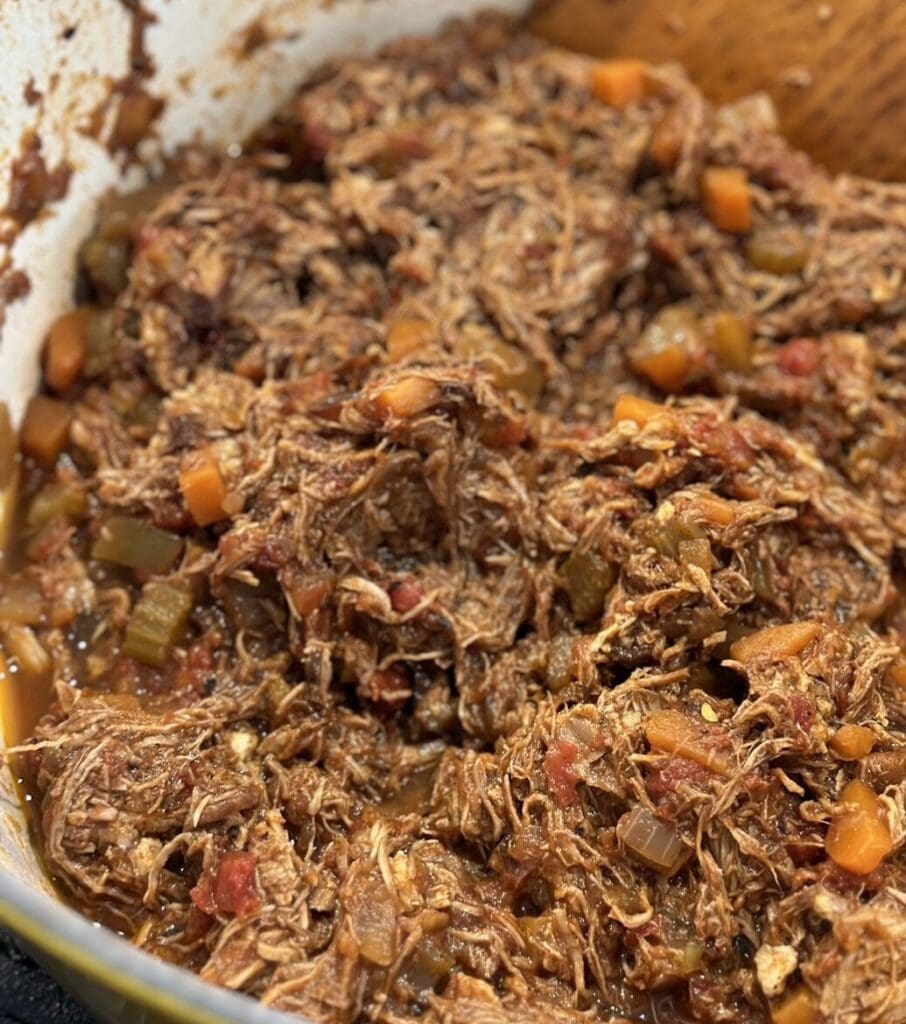
I used skin-on duck breasts because they’re easy to find where I am. Thankfully, duck breasts are much more flavourful than chicken breasts! If you can get pure, raw duck legs (not confit) they would also work in this ragu.
After a couple of hours, we’re left with tender braised duck in robust wine and tomato sauce. This Duck Ragu will have people roll their eyes in ecstasy after the first bite when served with good quality silky pappardelle or tagliatelle pasta.
Slow-cooked Duck Ragu
Do we need a Dutch oven or cast Iron pot for making ragu?
If you have a good-sized Dutch oven or cast Iron casserole pot, I would highly recommend cooking the ragu in this. These pots are no doubt expensive, but they do an amazing job of sealing all the flavours during slow cooking. However, a good quality large heavy-based saucepan with a heavy lid would also work.
What part of the duck is best for ragu?
Where I am, the selection of duck meat is very limited, so it’s a whole duck or duck breasts! They also have confit duck legs, but that’s not what we’re after. I choose duck breasts as I didn’t want to fuss with using an entire duck.
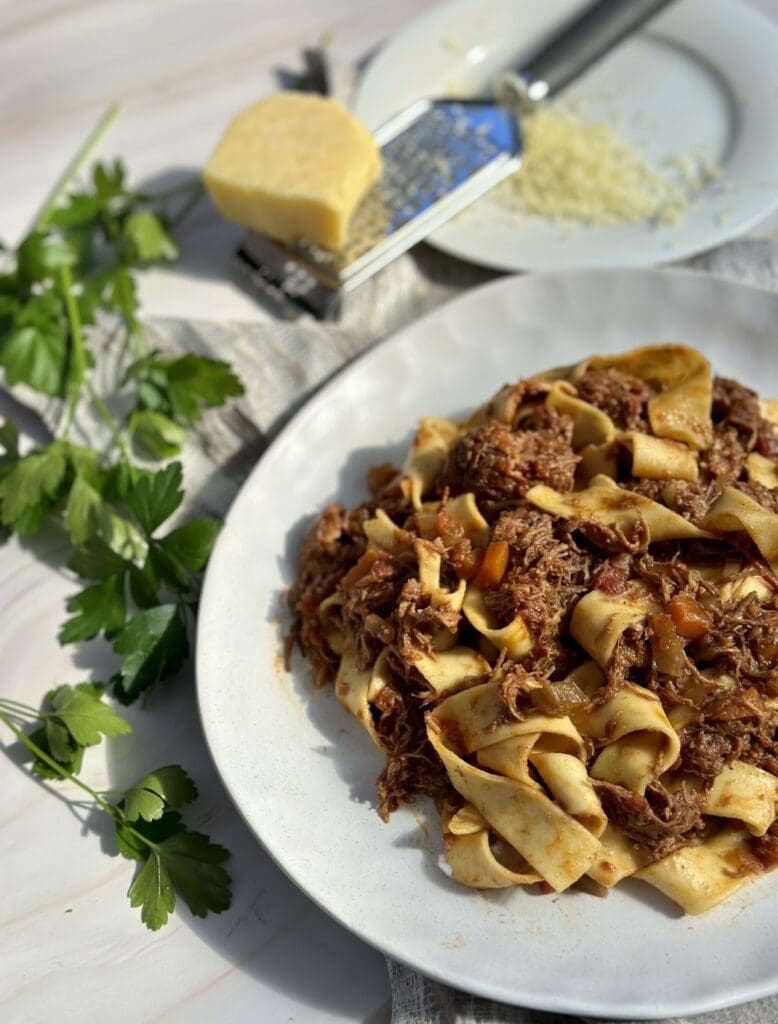
What to do with all that duck fat remaining?
Duck has lots of fat, even when using skin-on breasts or legs, we’ll have to render the fat. This means there will be a generous amount of fat remaining in the pan after browning the duck. We’ll need to remove most of the fat from the pan because we don’t want an oily ragu! However, don’t discard it.
Duck fat is clean tasting, and doesn’t have a ‘duck’ taste. It’s also healthier than most kinds of animal fat and heart-friendly with some health benefits. So, don’t let it go to waste, keep it for Duck Fat Potatoes or use it as an oil replacement when frying.
More amazing pasta recipes to try:
Ingredients for Duck Ragu
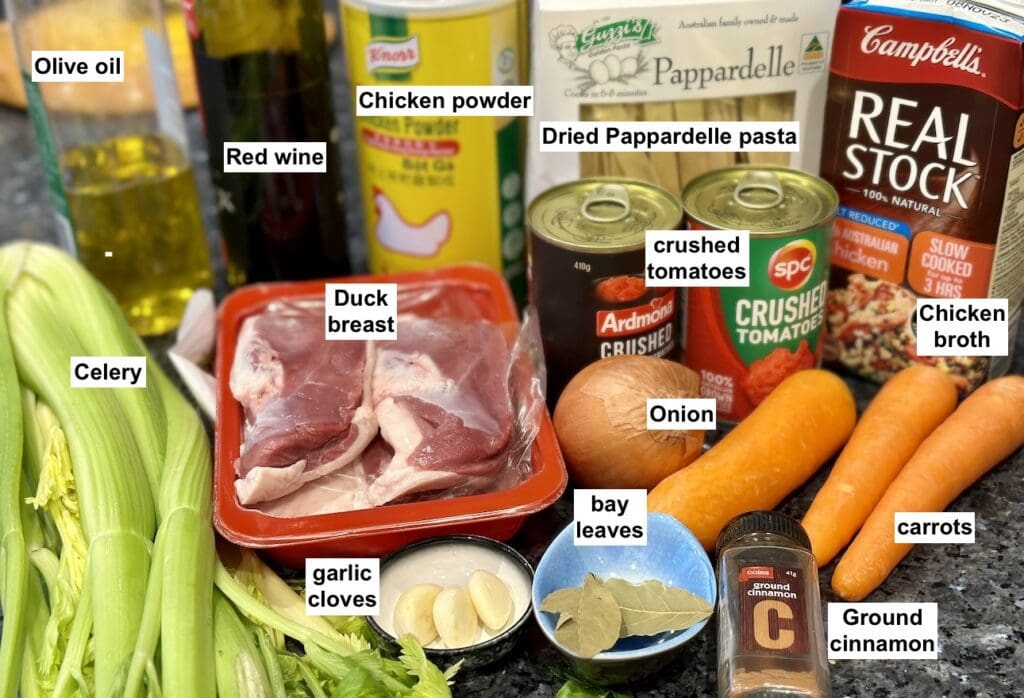
Duck breasts – I used 4 skin-on duck breasts (approx 800gm/ 1.8lbs in total). You could swap duck breasts for 1.2 kg/ 2.6lb of duck legs or whole duck.
Red wine – My personal tip for using red wine, is to use a cheap one that you enjoy drinking. Wine is quite strong tasting, so it affects the overall flavour of the dish so it’s best to use one you like! My cheap wine is a red blend and is on the sweet side and I love cooking with it. If you’re not a wine drinker, choose dry red wine (Pinot Noir, Merlot, Cabernet Sauvignon Shiraz). If you rather not use wine, swap for equal amounts of salt-reduced chicken stock or broth.
Chicken stock/broth – I prefer using salt-reduced (low-sodium) chicken stock because I have more control over the sodium level. This way I can adjust the seasoning in dishes to my liking. It’s always better to be under-seasoned than over-seasoned as it’s easier to fix.
Chicken powder – I cannot live without Knorr Chicken Powder (not sponsored). It seriously enhances the taste in many of my savoury dishes. Although I highly recommend this brand, other chicken powder or chicken bouillon cubes would work as a substitute.
Pappardelle pasta – I recommend good quality dried or fresh pappardelle pasta with this ragu. Fettuccine, tagliatelle or any flat long pasta would also work nicely.
Subscribe to 3CatsFoodie’s FREE Newsletter

For the latest recipes and other fun stuff!
Watch how to make Duck Ragu
Written step-by-step guide with photos
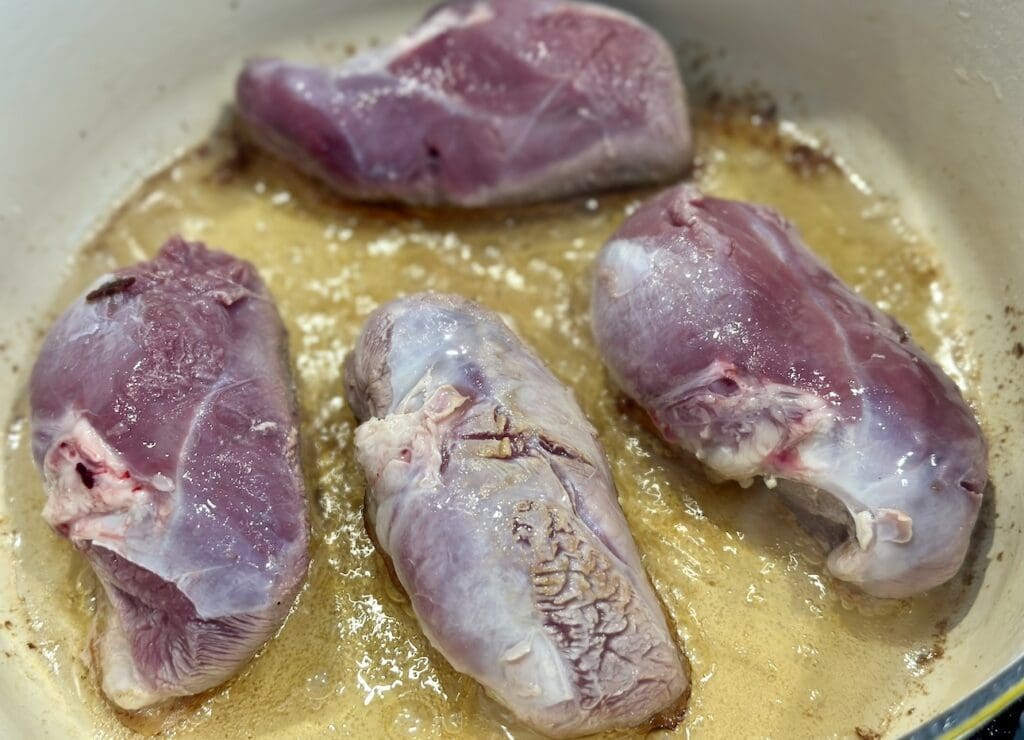
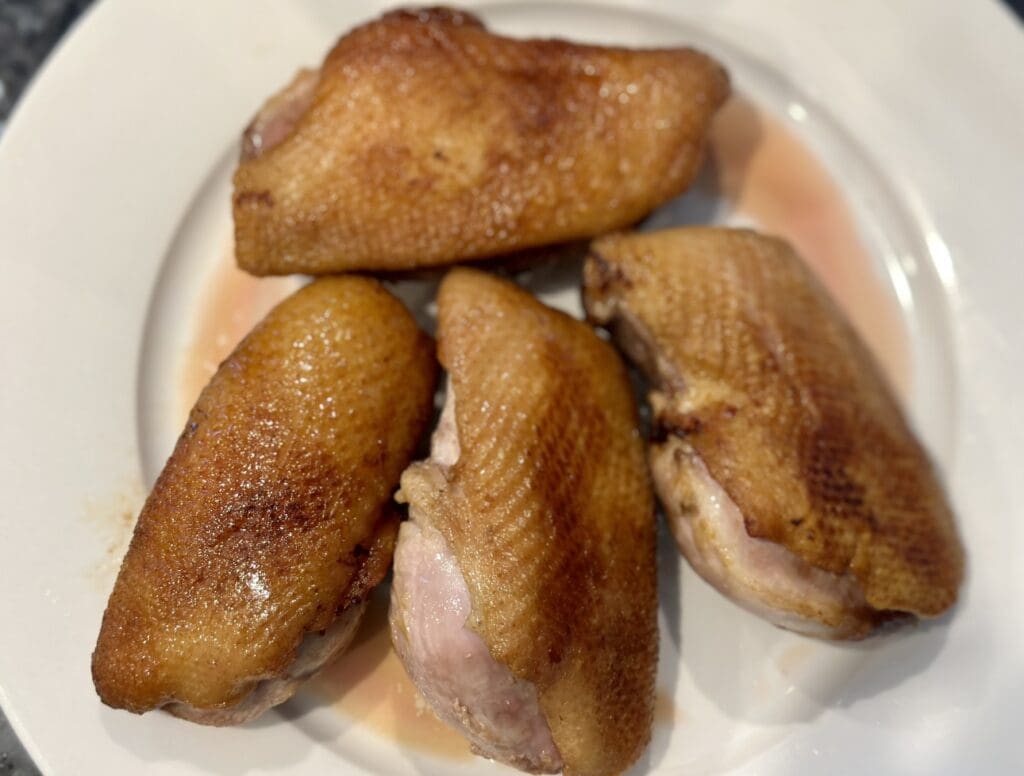
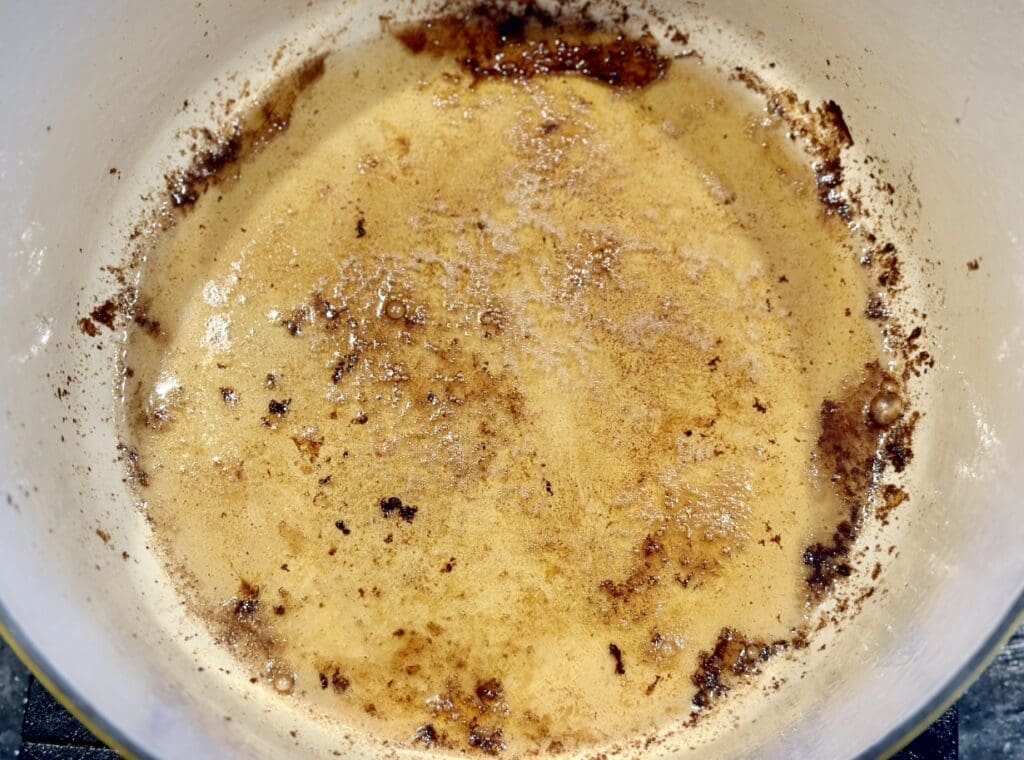
Heat the oil over medium heat in a large cast iron pot. Place the duck breasts skin down onto the oil and leave for 4 to 5 minutes until the fat renders and the skin is nice and brown. Turn the duck over and brown the other side for 2 to 3 minutes, then transfer onto a plate and set aside for later.
Drain the duck fat, leaving approximately 1 or 2 tablespoons in the pot. Keep the fat for other uses later.


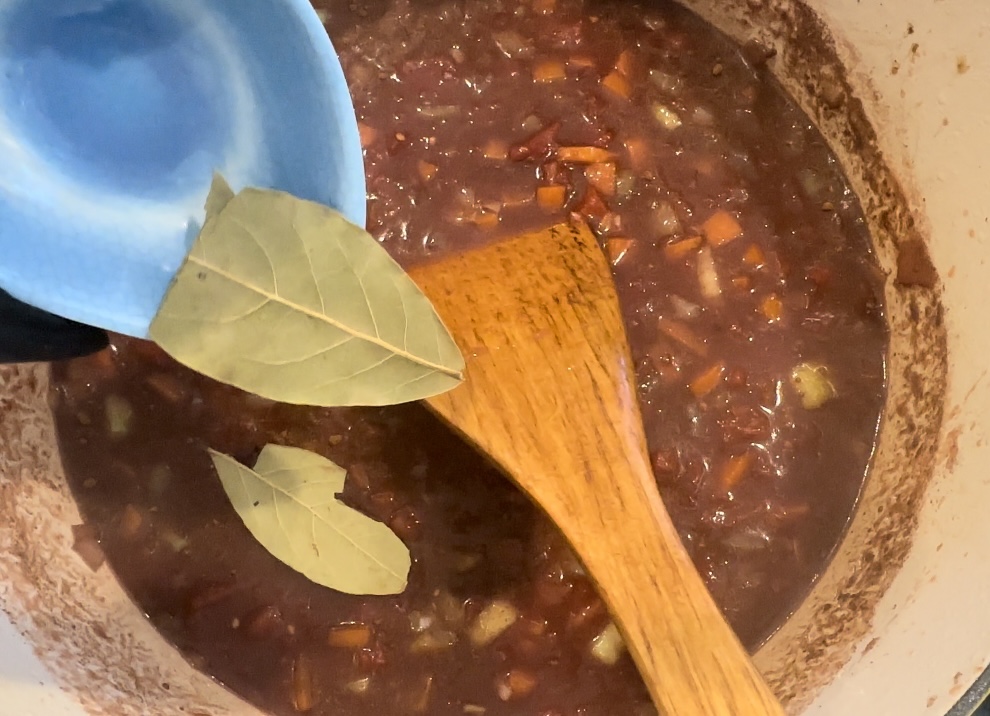
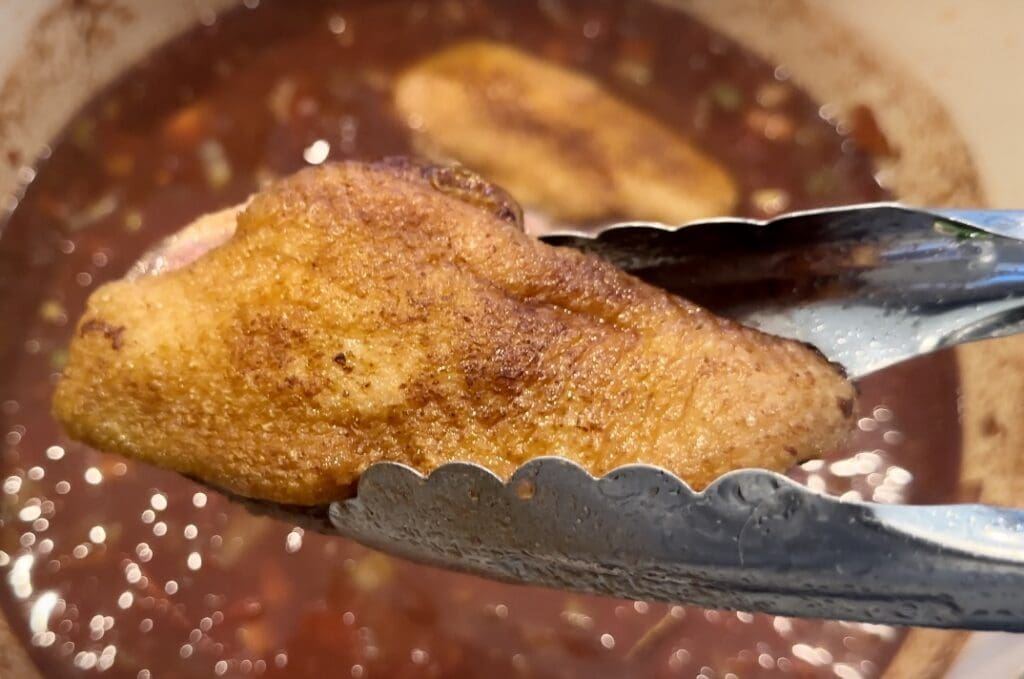
In the same pot, add the garlic and onions. Stir regularly for a minute, then add the carrots and celery and stir for 2 minutes. Pour in the wine and stir for a minute, then add in the tomatoes, stock, bay leaves, cinnamon, chicken powder, sugar, salt and pepper. Bring the sauce to a boil, then reduce heat to low and add the duck breasts along with its juices (skin up) then cover. Slow-cook the ragu for 2 to 2.5 hours or until the duck breasts are tender.
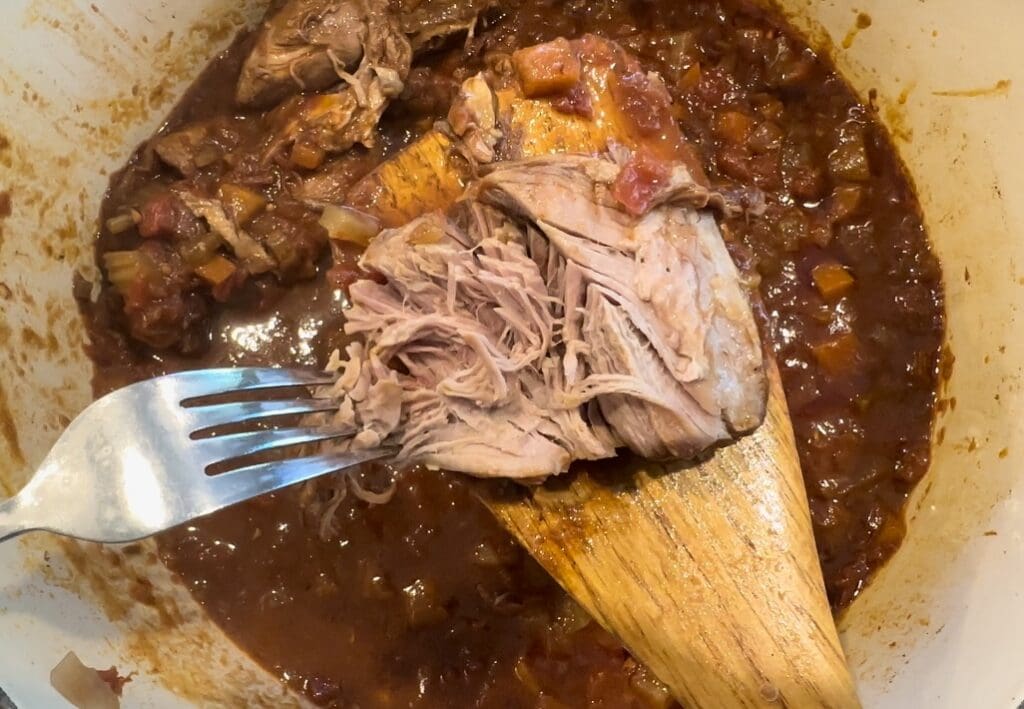
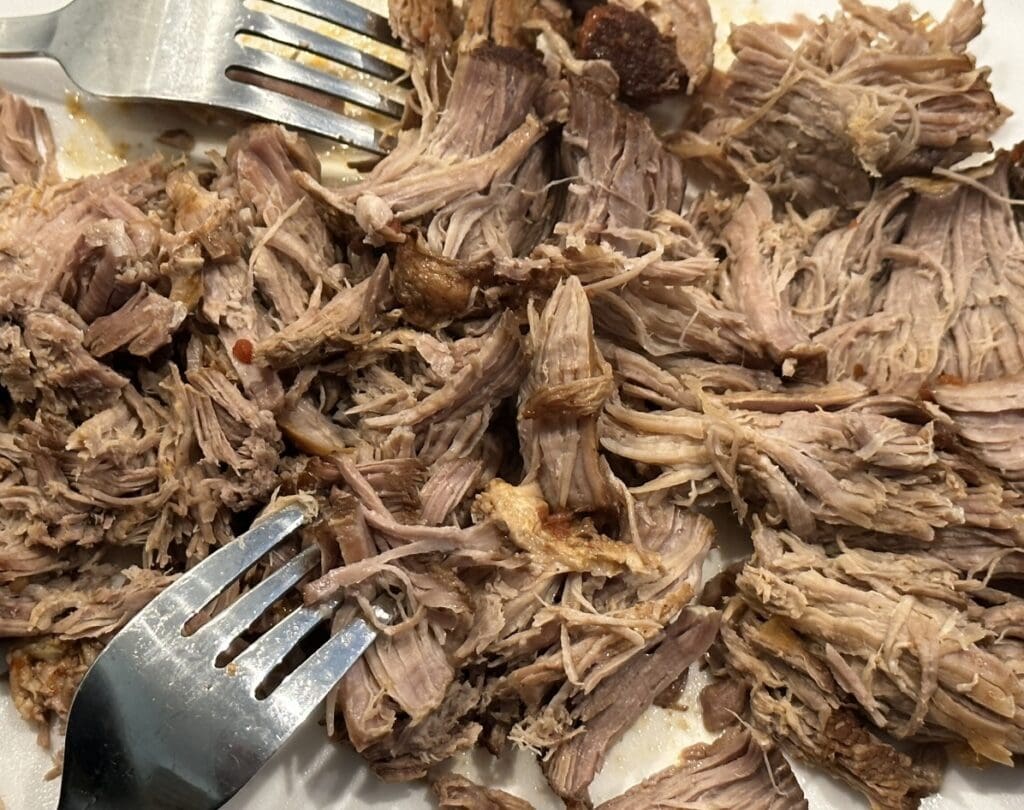
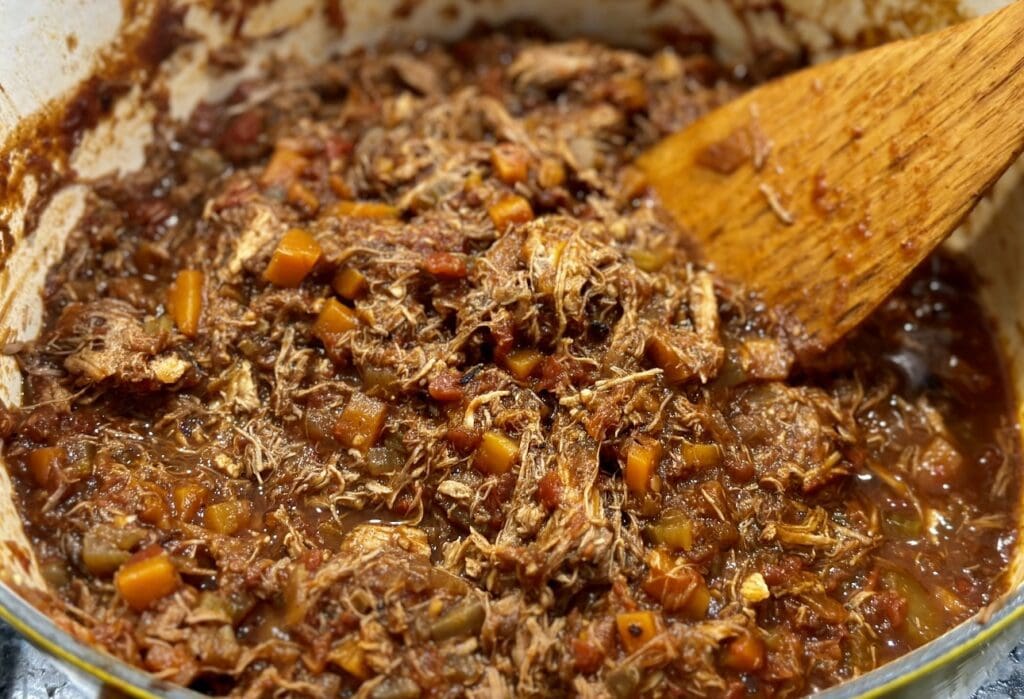
Transfer the duck onto a board or plate, then remove the skin (discard or chop it into small pieces and place it back into the ragu). Use two forks to shred the duck, then return it to the pot. Increase the heat to medium and reduce the sauce to your liking (the sauce is supposed to be thin). Have a taste of the ragu and add more salt and pepper to your liking if needed.
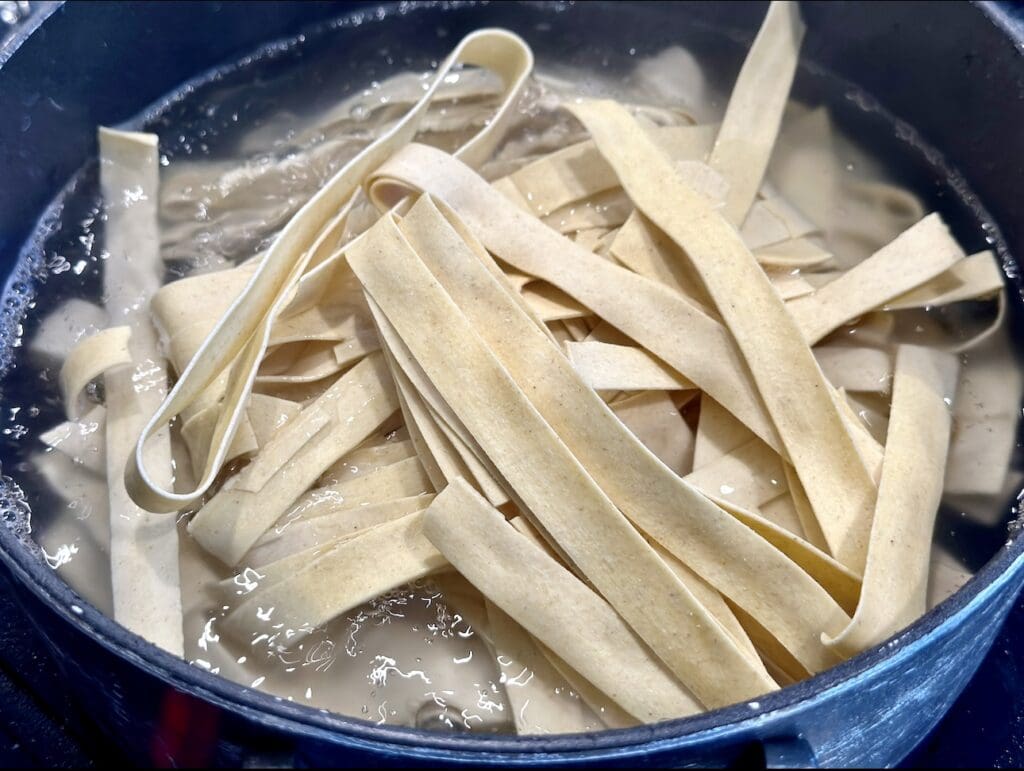
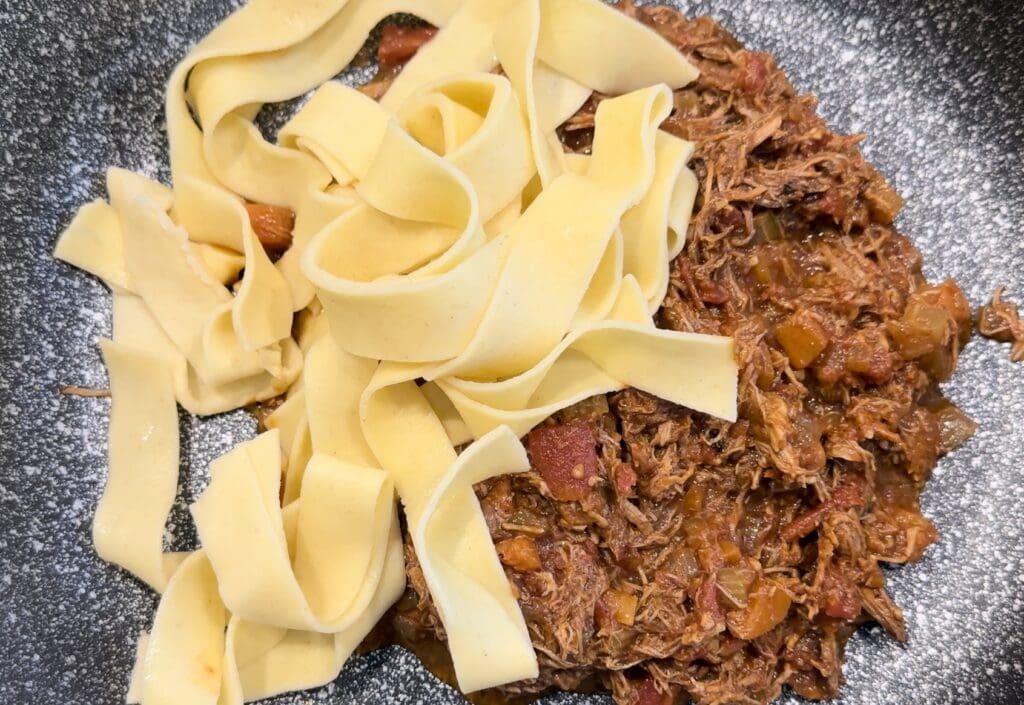
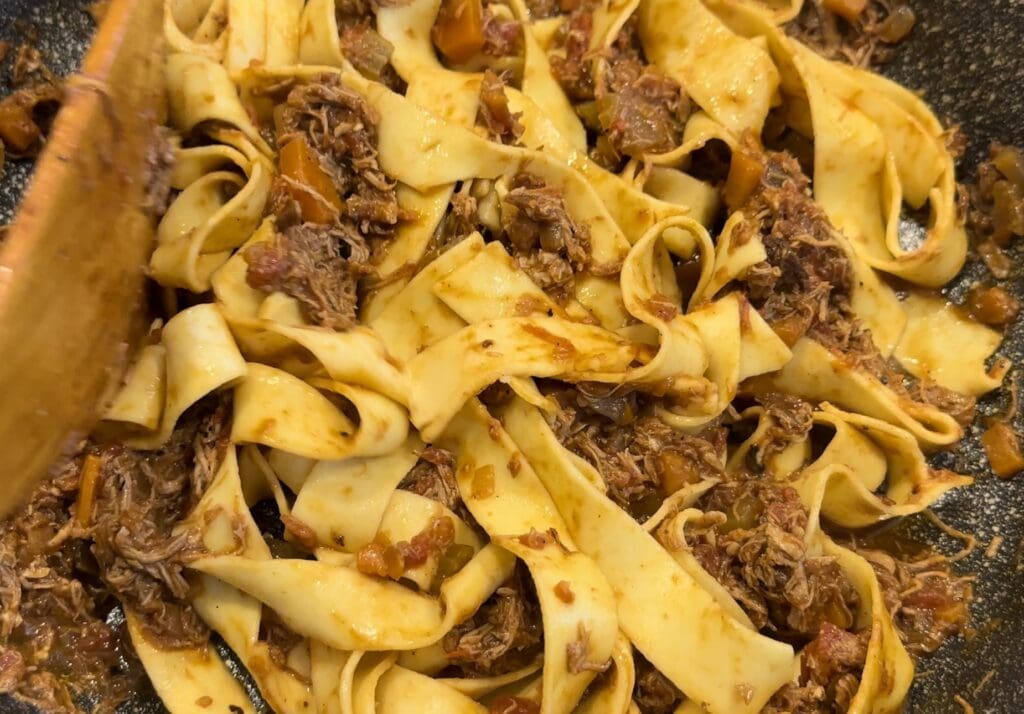
Whilst the ragu has 10 minutes left remaining, prepare the pasta. Cook the pasta as per the instructions on the packet. Before draining the pasta, reserve a cup of pasta water.
Heat a frying pan over medium heat. Working in batches, add in a few ladles of ragu and some pasta. Pour in 1 or 2 tablespoons of pasta water to loosen up the ragu if needed. Toss the pasta so it’s covered in the ragu and cook for 2 to 3 minutes or just until heated through. Sprinkle on some freshly grated parmesan (optional) and serve immediately.
Leftovers – Allow the ragu to cool completely at room temperature, then transfer them into a sealed container and store them in the fridge for up to 3 days.
I’ve used a third-party application to calculate the calories and nutritional information, so please use this as an approximate guide only.
Cooking measurements are in Australian standard spoon and cup measurements. For specific details and conversions, visit our Australian Cooking Measurements page.
I would love your feedback and support if you made this recipe. To do this, please rate this recipe and provide a comment by scrolling down this page or by clicking that green circle on the bottom left. An email address is required (for spam), but it won’t be published. I would also love to see your dish, so don’t forget to tag me on my Instagram account ‘3catsfoodie’
Cheers – Cat T
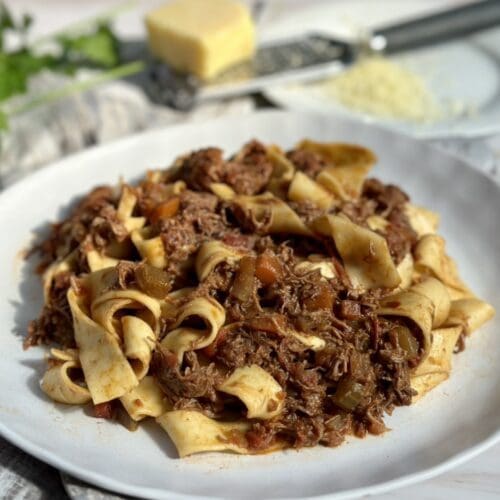
Duck Ragu
Ingredients
- 1 tbsp mild/light olive oil
- 800 gm duck breasts (NOTE 1)
- 3 garlic cloves
- 1 small brown onion
- 1 cup diced celery
- 1 cup diced carrots
- 1 cup red wine (NOTE 2)
- 800 gm crushed tomatoes (2 x 400g/ 14oz tins)
- 1 cup salt-reduced chicken stock (NOTE 3)
- 2 dried bay leaves
- 1 tsp ground cinnamon
- 2 tsp chicken powder (NOTE 4)
- 1 tsp sugar
- 1 tsp salt
- ½ tsp freshly ground black pepper
- 500 gm dried pappardelle pasta (NOTE 5)
- Optional – parmesan cheese to serve
Instructions
- Heat the oil over medium heat in a large cast iron pot. Place the duck breasts skin down onto the oil and leave for 4 to 5 minutes until the fat renders and the skin is nice and brown. Turn the duck over and brown the other side for 2 to 3 minutes, then transfer onto a plate and set aside for later.Drain the duck fat, leaving approximately 1 or 2 tablespoons in the pot. Keep the fat for other uses later.

- In the same pot, add the garlic and onions. Stir regularly for a minute, then add the carrots and celery and stir for 2 minutes. Pour in the wine and stir for a minute, then add in the tomatoes, stock, bay leaves, cinnamon, chicken powder, sugar, salt and pepper. Bring the sauce to a boil, then reduce heat to low and add the duck breasts along with its juices (skin up) then cover. Slow-cook the ragu for 2 to 2.5 hours or until the duck breasts are tender.

- Transfer the duck onto a board or plate, then remove the skin (discard or chop it into small pieces and place it back into the ragu). Use two forks to shred the duck, then return it to the pot. Increase the heat to medium and reduce the sauce to your liking (the sauce is supposed to be thin). Have a taste of the ragu and add more salt and pepper to your liking if needed.

- Whilst the ragu has 10 minutes left remaining, prepare the pasta. Cook the pasta as per the instructions on the packet. Before draining the pasta, reserve a cup of pasta water.Heat a frying pan over medium heat. Working in batches, add in a few ladles of ragu and some pasta. Pour in 1 or 2 tablespoons of pasta water to loosen up the ragu if needed. Toss the pasta so it's covered in the ragu and cook for 2 to 3 minutes or just until heated through. Sprinkle on some freshly grated parmesan (optional) and serve immediately.


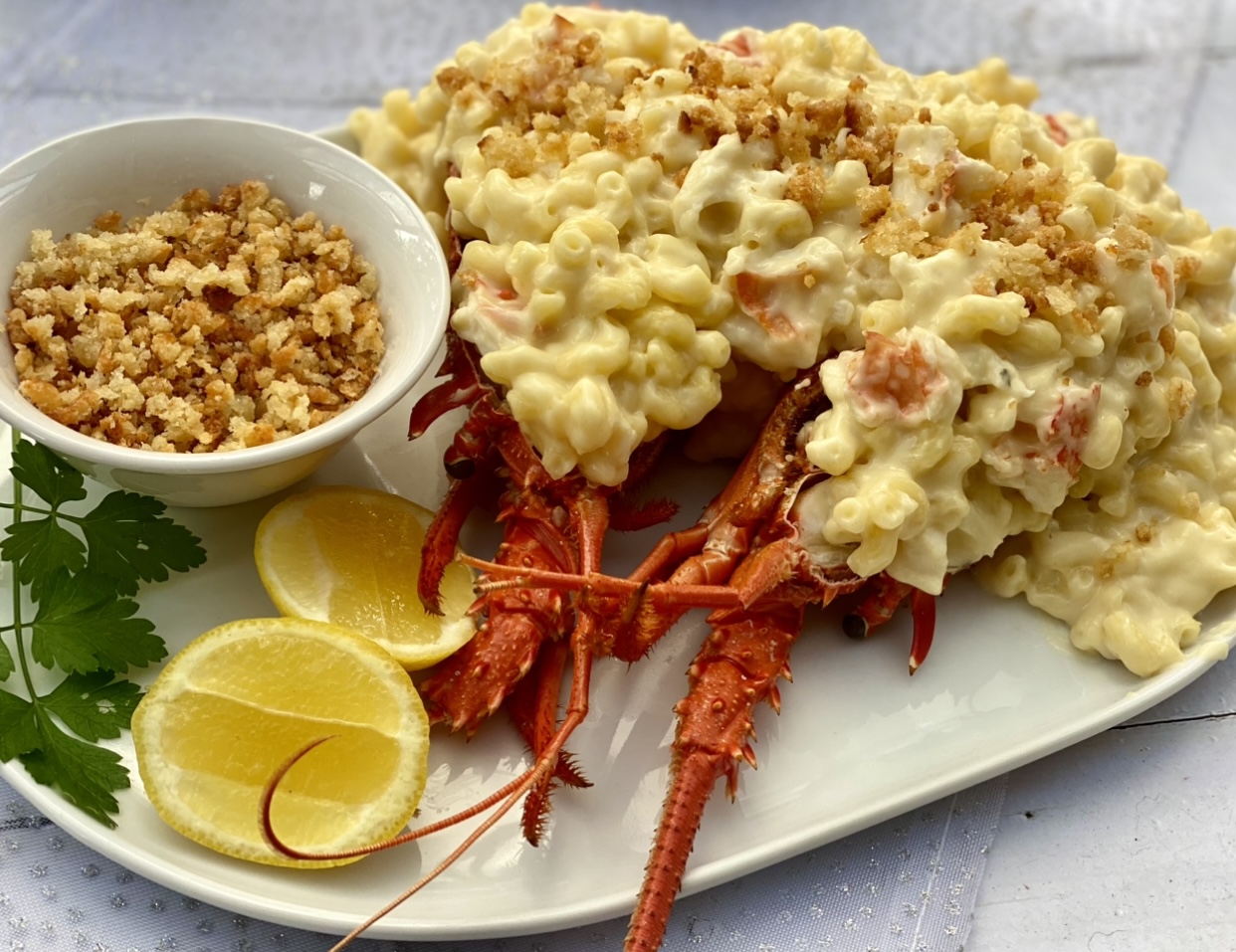
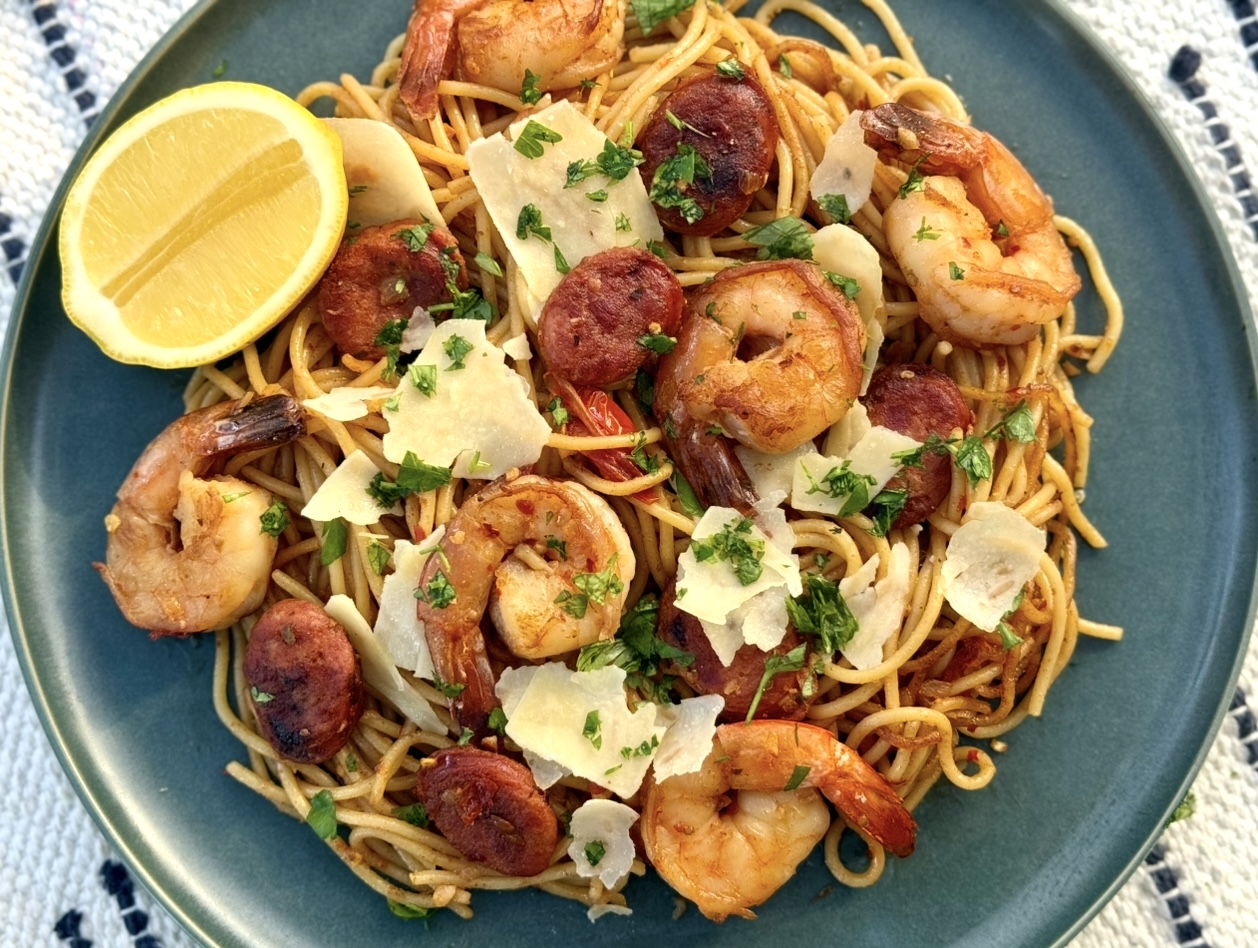
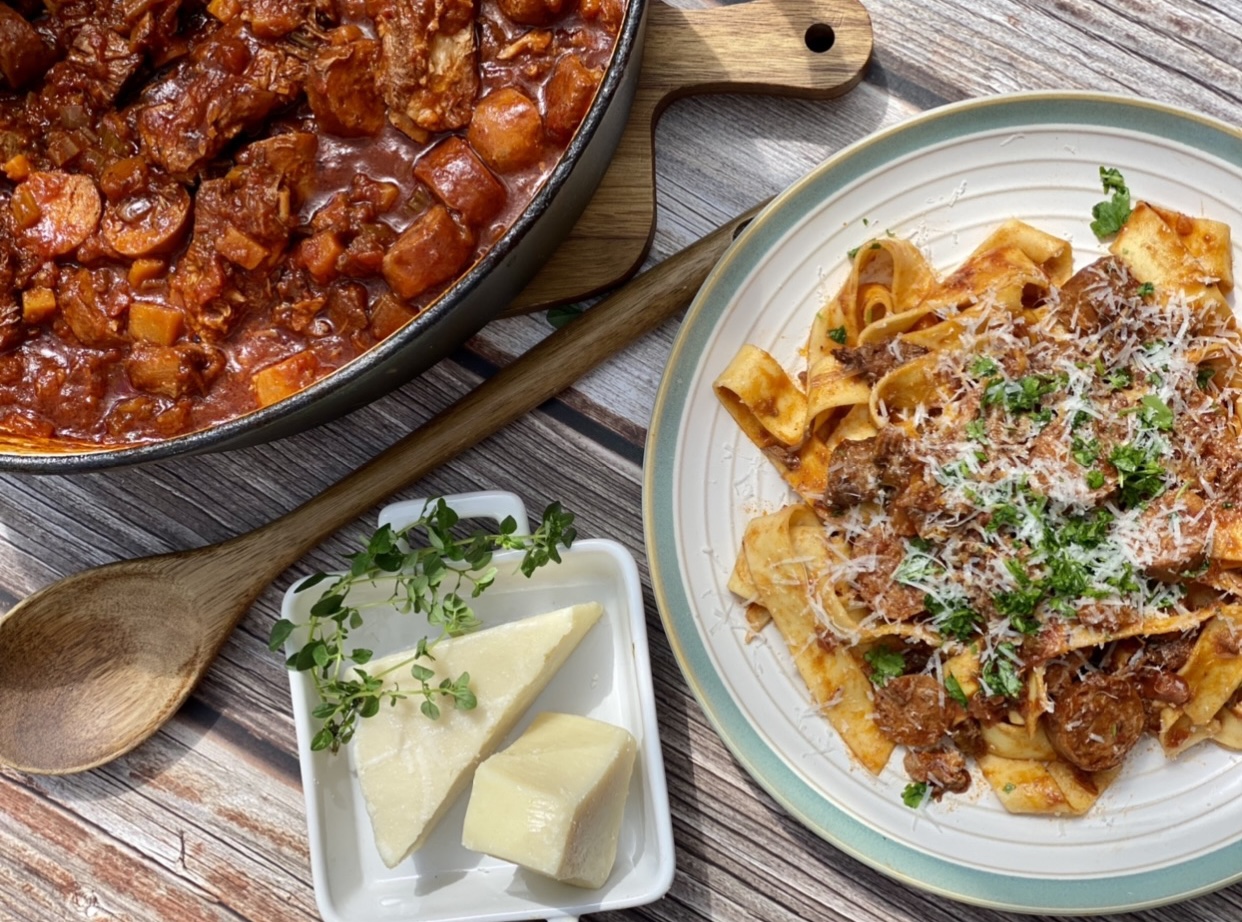
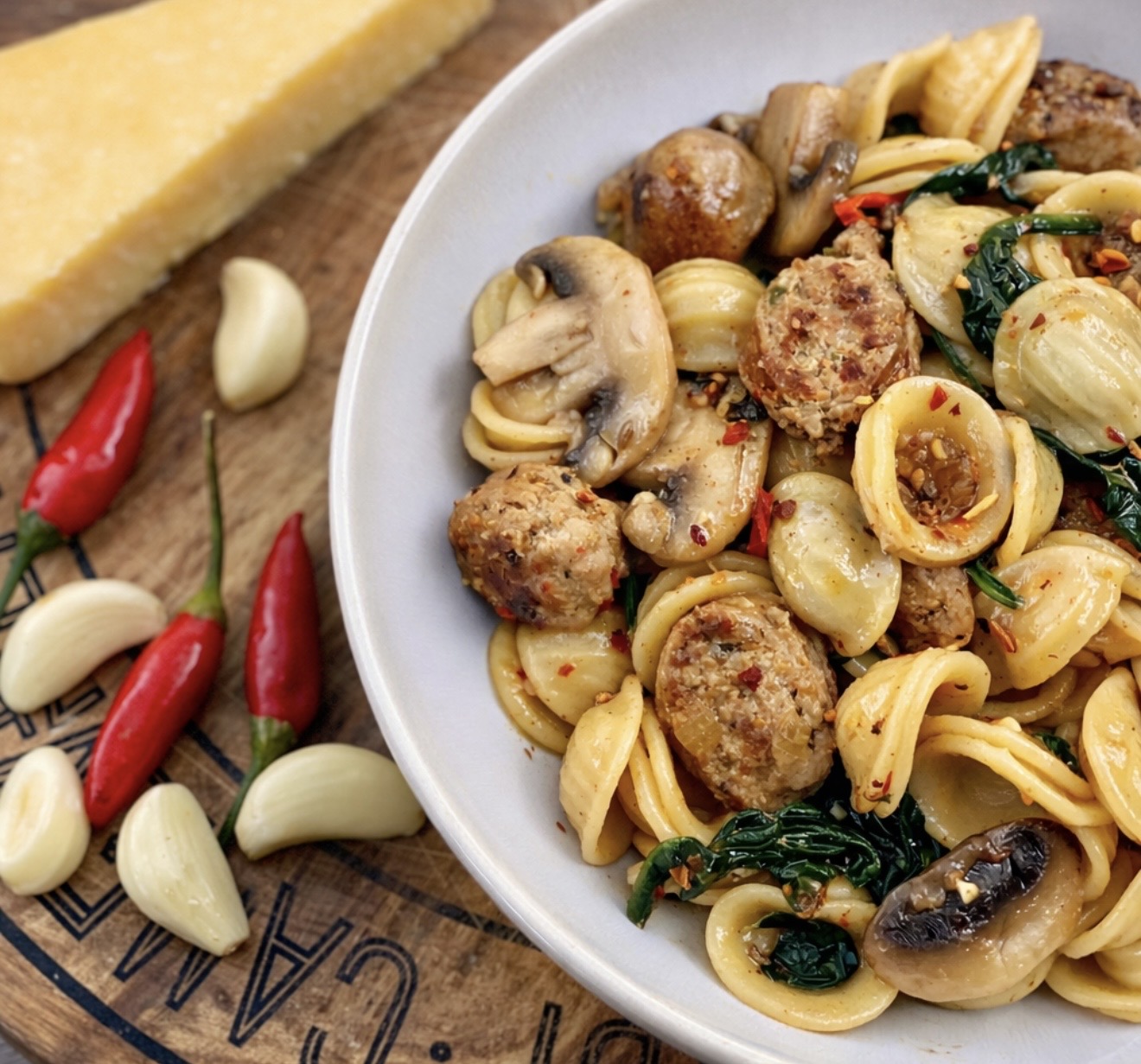
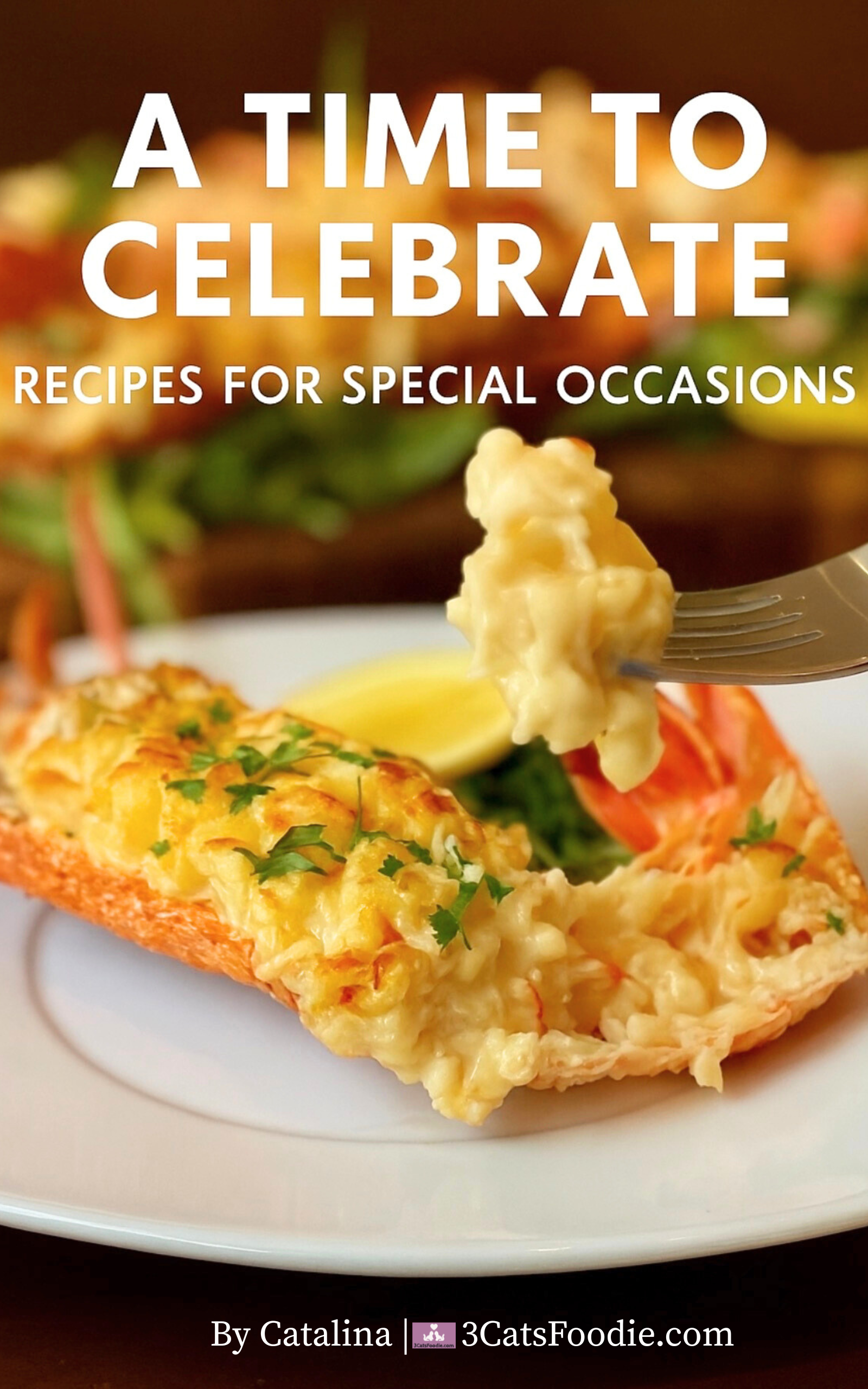
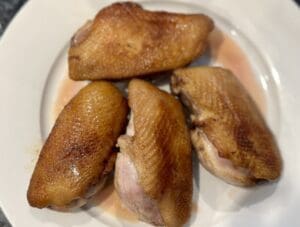
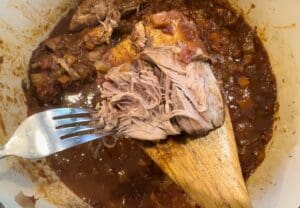
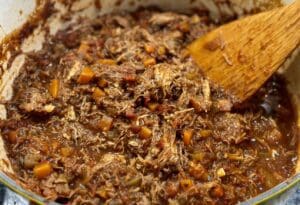
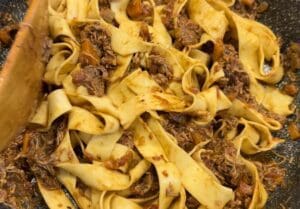
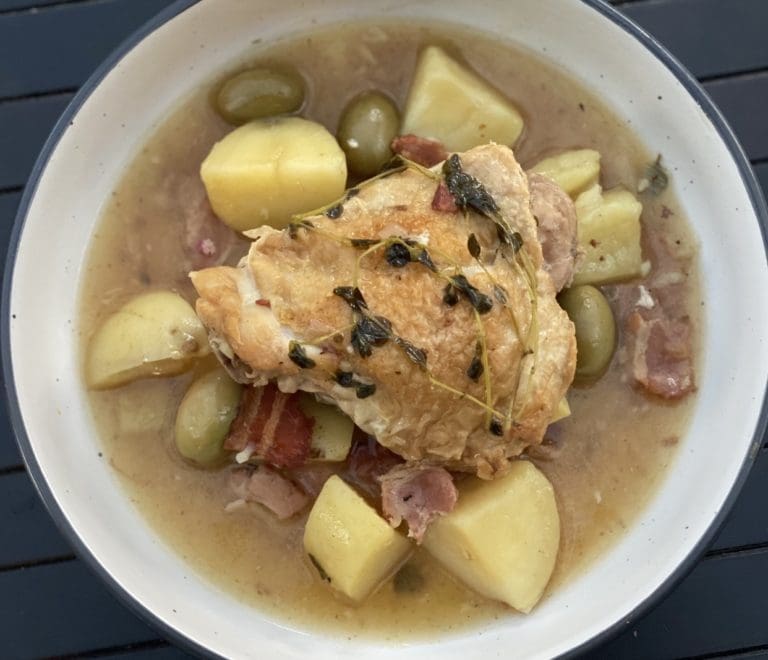
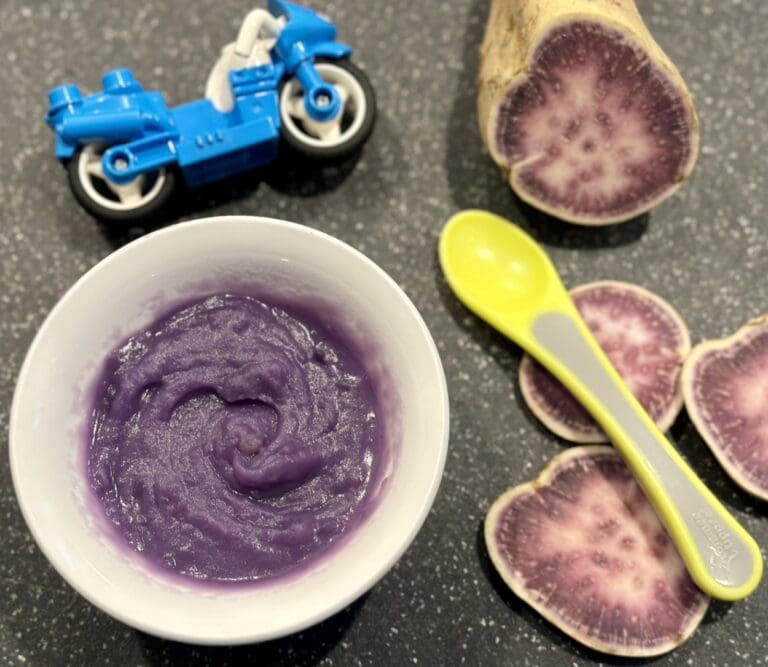
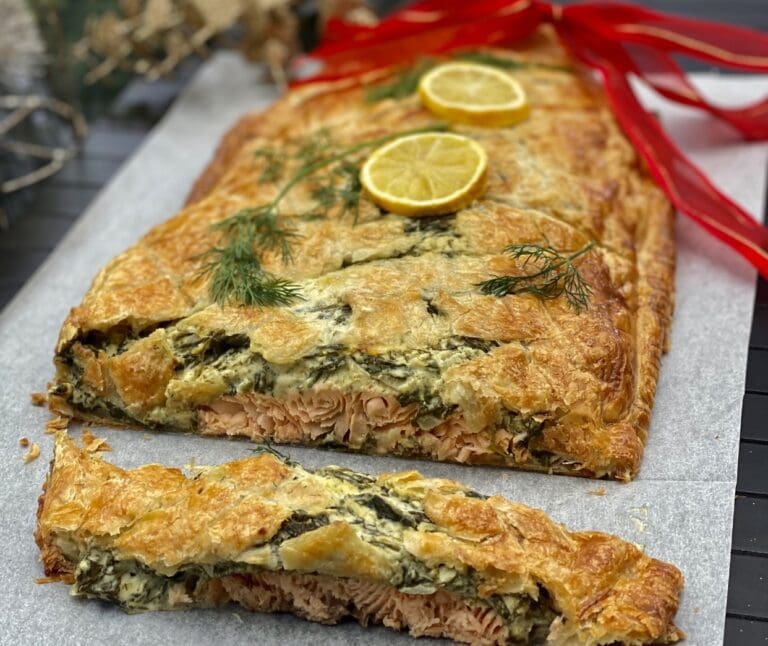
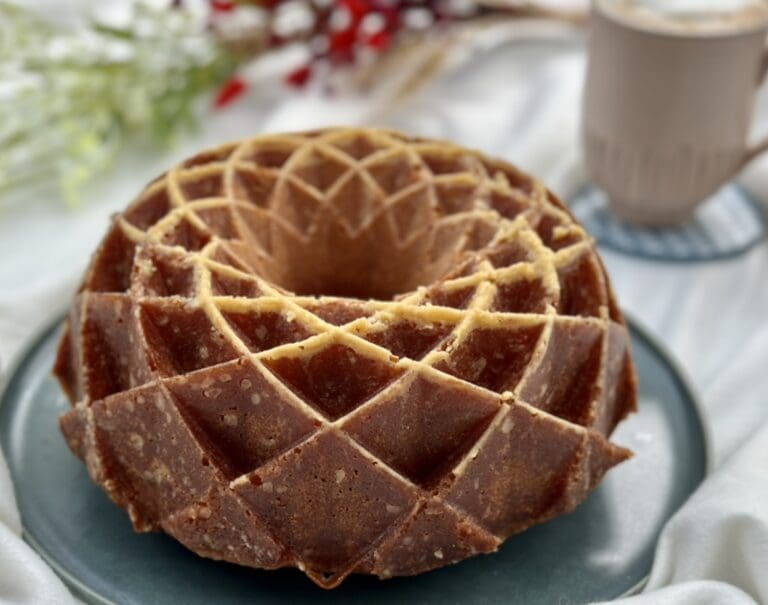
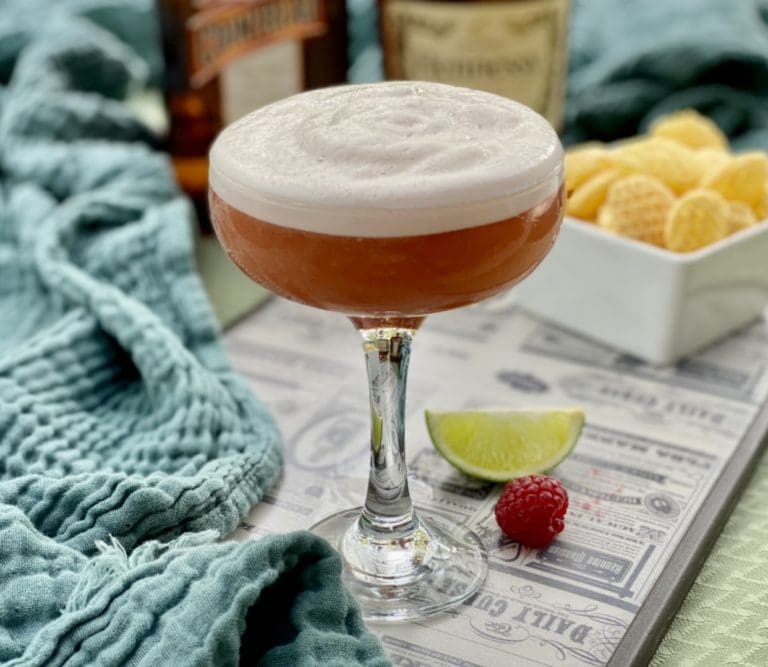
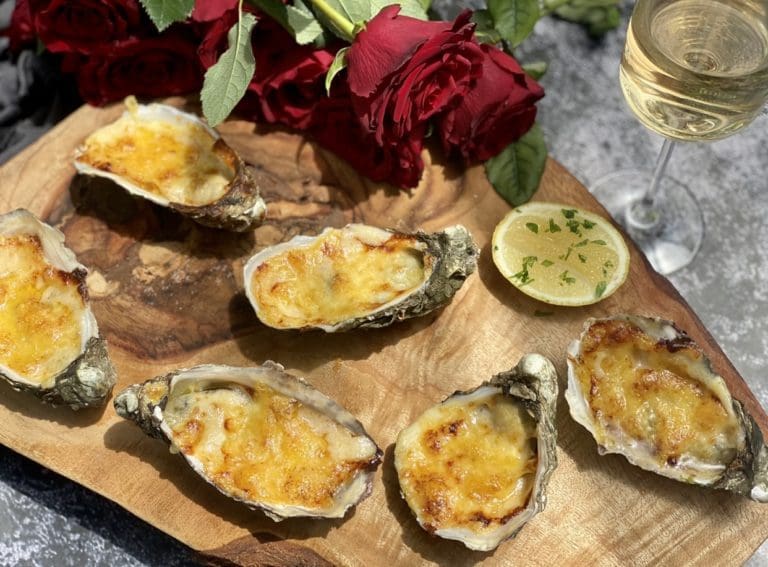
Tried this ragu last night. Just gorgeous! Thank you thank you, my family thinks I’m a superb cook
Hi Tyler,
That’s wonderful! Thanks for taking the time to rate my recipe and leaving a comment ?